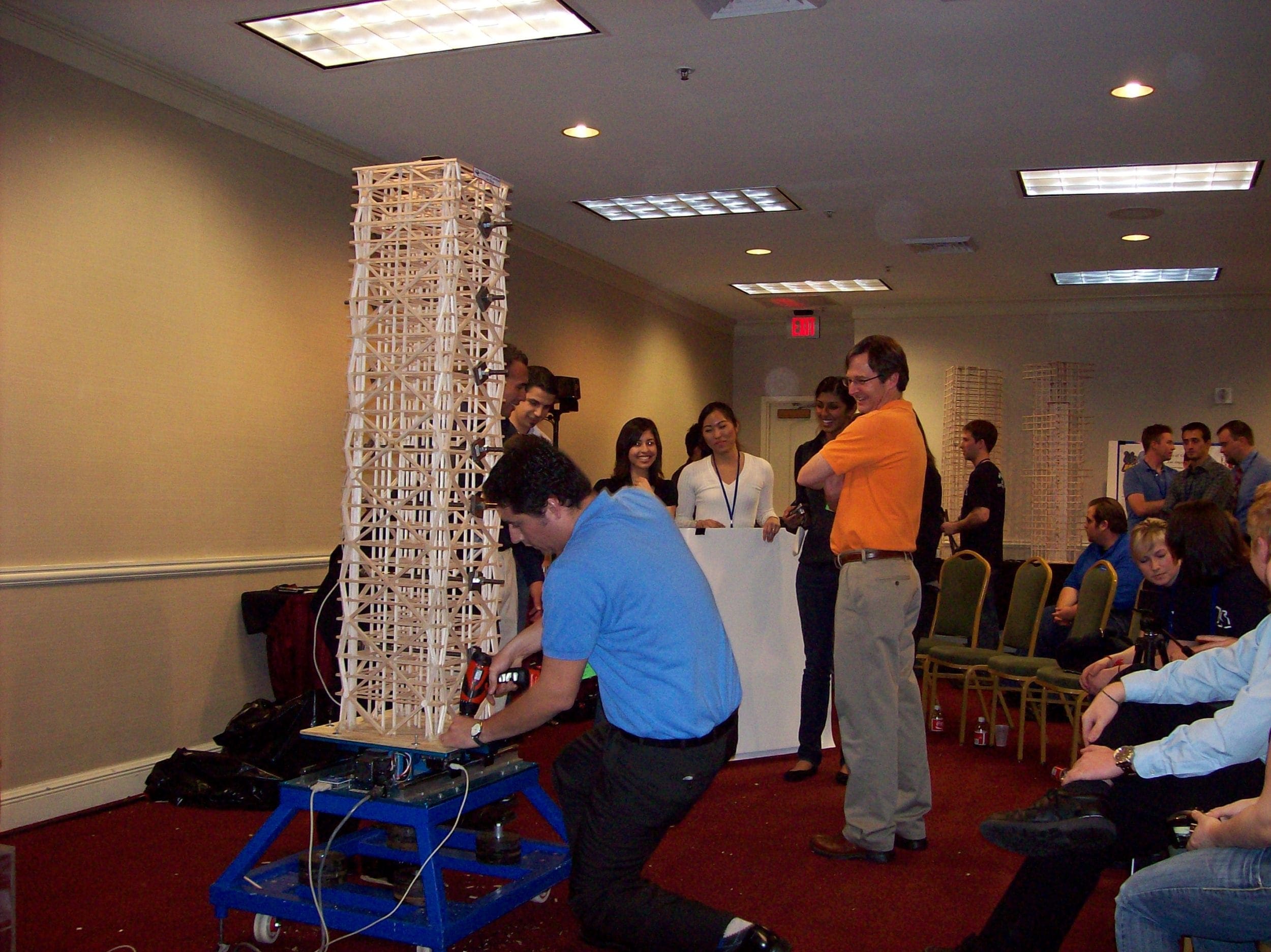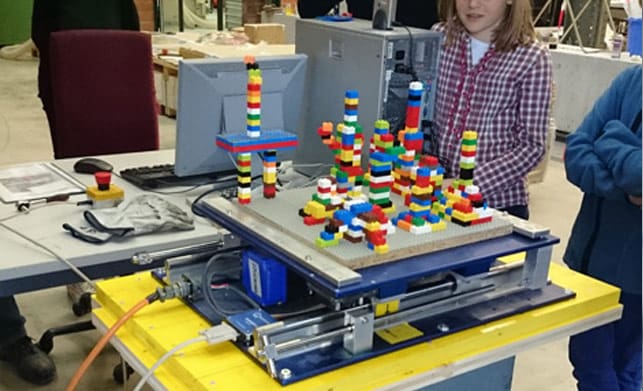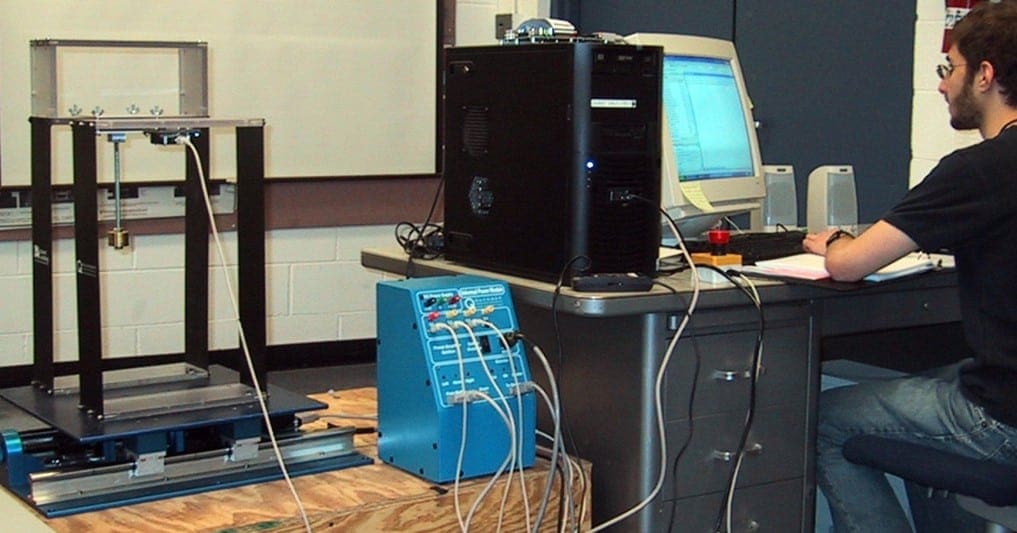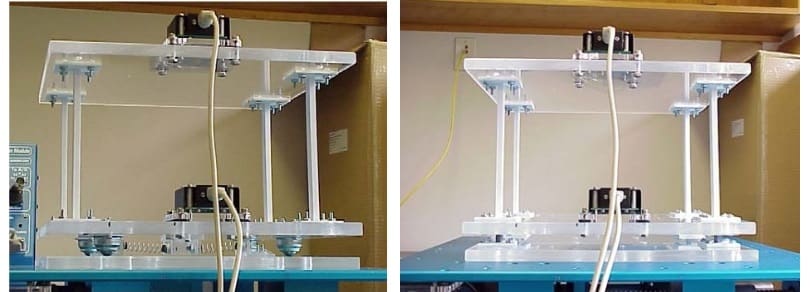
In my previous posts on the structural vibration control methods, I discussed various active and passive damping devices. These are typically installed on the higher floors of structures. Today, let’s talk about a ground-based technique for reducing structural motion, known as base isolation.
How Does Base Isolation Work?
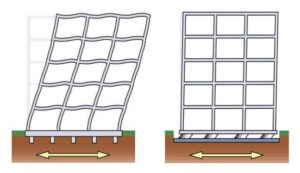
Base isolation is widely used in the earthquake-resistant design. This passive control technique basically decouples the structure from the ground motion by introducing a flexible or sliding type interface. During the earthquake, when the frequency of the ground motion is close to the natural frequency of the building, the structure can sway significantly. Base isolation deflects and dissipates the seismic energy, lowering the natural frequency of the structure. That way, the base isolation minimizes the displacement of the structure and protects its structural integrity.
This short video is a great demonstration of how structures with and without the base isolation behave:
Base Isolation Systems
Structural engineers use two types of base isolation systems – or their combination – to enhance the earthquake resistance of the structure: elastomeric bearings and sliding isolation bearings.
Elastomeric bearings consist of layers of natural or synthetic rubber that act in the isolator as a spring. This method is well-known in isolating vibrating machines. Civil engineers used it for the first time in 1969 to protect an elementary school in Skopje, Republic of Macedonia (Makris, 2018).
Sliding isolators work on a principle of friction, limiting the transfer of shear across the isolation interface. Imagine two plates that can slide over each other: the sliding starts only when the exciting force of the earthquake is greater than the frictional force between the plates. As a result, the displacement motion of the isolator is of a stick-slip nature.
Undergrad Students Learn about Elastomeric and Sliding Isolation Bearings
To demonstrate the principles of both isolation systems to undergraduate students, Dr. Symans from Rensselaer Polytechnic Institute developed an experiment with a one-floor test structure. Students explored the effects of structure base isolation using sliding and elastomeric bearings through a series of tests on a Quanser Shake Table II. These tests included system identification (free and forced vibrations), steady-state harmonic loading, and earthquake loading using historical earthquakes data. Further, they compared the experimental results with predictions from numerical analyses (Shaking Table Demonstration of Dynamic Response of Base-Isolated Buildings, UCIST).
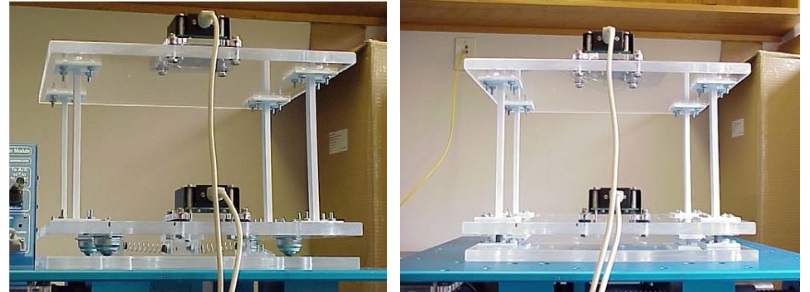
Friction Pendulum Bearings
Sliding isolators can be implemented in different ways. Pure friction systems use flat stainless-steel plates to introduce the sliding motion. However, this technique has some limitations. Their main disadvantage is due to the geometry of the sliding surface – it can produce large and residual sliding displacements. Friction pendulum systems, based on pendulum motion principles, overcome these issues. As the picture below illustrates, in an earthquake the slider moves along the spherical concave surface of the bearing, helping minimize the motions of the mass caused by seismic activity. At the end of the earthquake, the gravitational force returns the slider to its original position, minimizing the residual displacement.
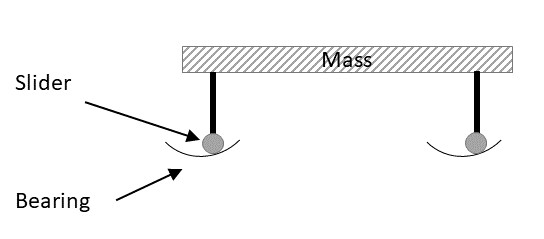
Many structures, including the Benicia Martinez Bridge, use friction pendulum bearings for base isolation. The paper Development of a Friction Pendulum Bearing Base Isolation System for Earthquake Engineering Education (Kravchuk et al., 2008) lists other real-world examples.
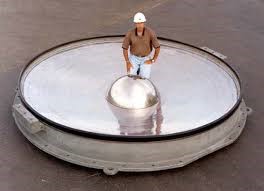
Undergrad Students Learn About Friction Pendulum Bearing Systems
In the paper I’ve just mentioned above, the authors describe the development of a friction pendulum bearing system as an experimental tool for undergraduate education. Through physical demonstration, they wanted to help students understand the concept and effectiveness of this type of base isolation system.
To show the effect of the base isolation on the performance of a structure, the authors used two Quanser one-floor test structures: one with the friction pendulum bearing base isolation system, the other with no base isolation. They compared the top floor accelerations of these structures when exposed to the earthquake motion simulated by the Shake Table II.
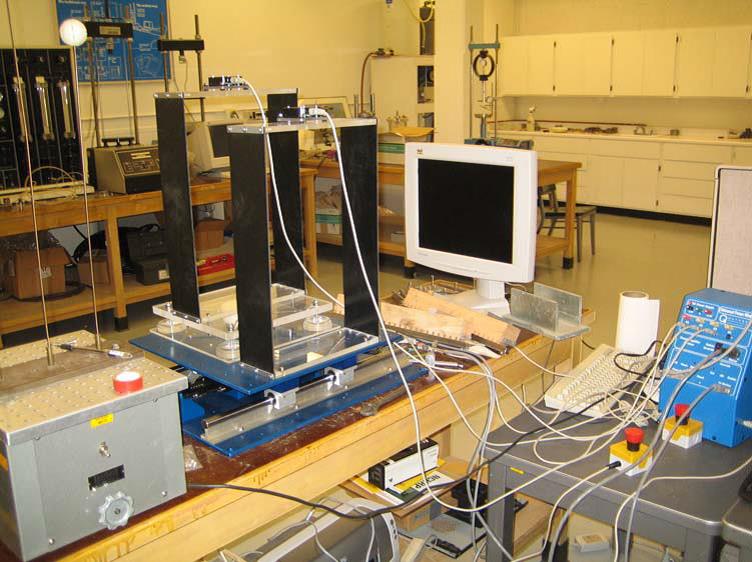
The results showed that the friction pendulum bearing base isolation could reduce the acceleration of the top floor by almost 60% when the natural frequency of the structure is reached. While they developed the lab experiment for educational purposes, it highlights how effective base isolation strategies could be and why they are used in structures around the world.
Base Isolation Systems and Winds
Base isolation is very effective in enhancing seismic resistance of structures. It is not, however, as effective against wind disturbances. Base isolation actually lowers the inherent lateral stiffness of a structure, which means that strong winds could result in its large displacement. To overcome this issue, base isolation is often complemented by tuned mass dampers.
Developing a Smart Base Isolation System
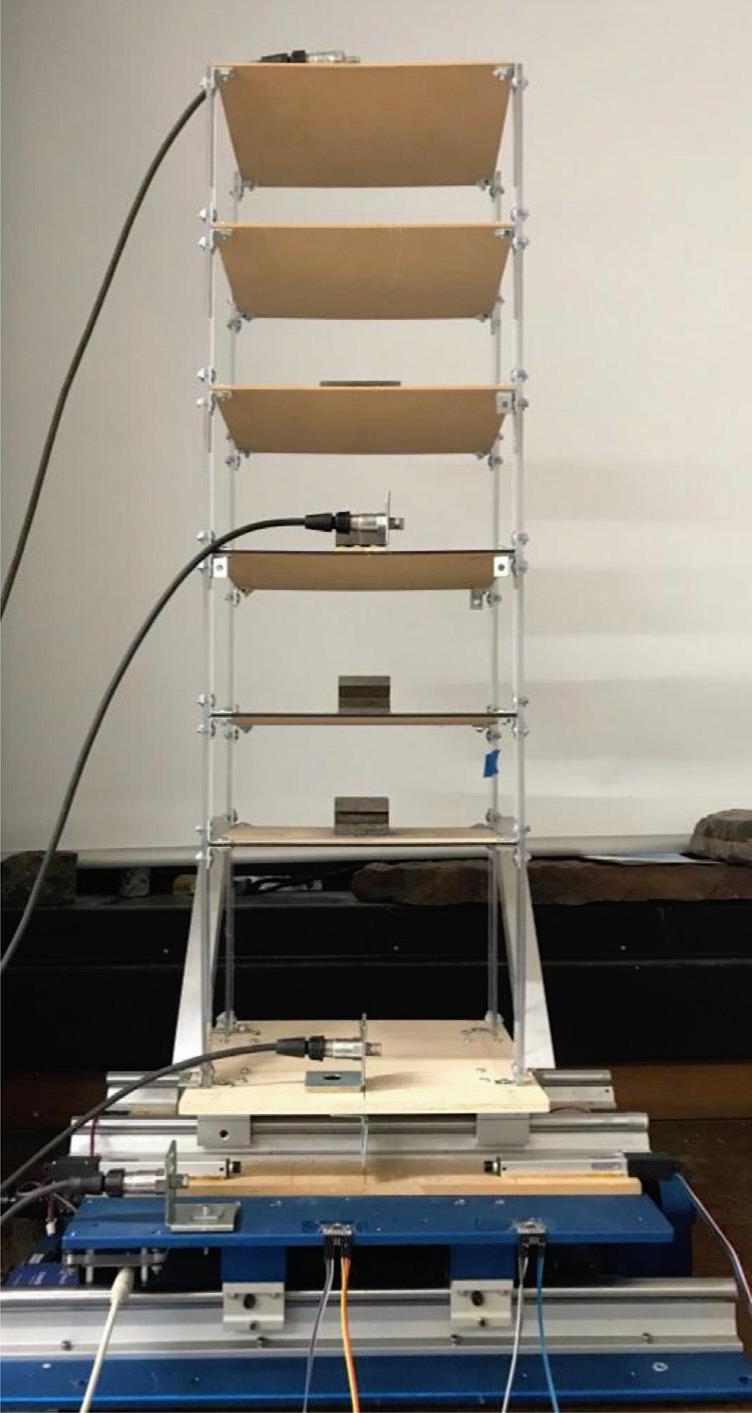
Japan and many other countries have implemented Early Earthquake Warning (EEW) technology. The EEW sysytem can predict if an earthquake is going to occur and issue a warning. The researchers from the RMIT University in Australia and the Hiroshima University, Japan, decided to use the EEW signal to activate a base isolation system.
Their proposed smart mechatronic base isolation system is turned on and off depending on the load type. The EEW signal would activate the base isolation, but in high winds, it would remain inactive, maintaining the lateral rigidity of the building.
As a backup, in case the EEW system failed to issue a signal, the researchers employed a network of accelerometers that could detect ground motions. If the accelerometer measurements exceeded a certain threshold, the base isolation was engaged independently from the EEW system.
Demonstrating Feasibility of the Smart Base Isolation
To demonstrate the feasibility of their approach, the researchers performed laboratory-scale experiments. They used a test structure with the smart base isolation system mounted on the Quanser Shake Table II.
Using shear keys, they activated or deactivated the base isolation system:

The team performed tests under three different conditions:
1. Fixed base with deactivated base isolation
2. Base isolation enabled, an advanced EEW signal triggered the activation
3. Base isolation enabled, the local acceleration measurements triggered the activation
They also applied four different earthquakes on the shake table system and measured the ground, floor, and roof accelerations. The results show that the proposed smart mechatronic base isolation system significantly reduced floor responses regardless of the base isolation triggering method. For more details, check their paper A smart mechatronic base isolation system using earthquake early warning (Soil Dynamics and Earthquake Engineering, 2019).
Explore Base Isolation in Your Lab
Base isolation is one of the most effective control strategies for mitigating the structural response under seismic load. It is important that students in civil and earthquake engineering programs get a good grasp of the concept. I hope this blog post provides some examples of how the theory can be reinforced through hands-on, practical experimentation in a lab setting.
In addition, base isolation offers an interesting challenge for researchers to enhance existing devices and control strategies. Again, Quanser motion simulators can speed up this work, offering platforms for lab-scale, proof-of-concept studies.

